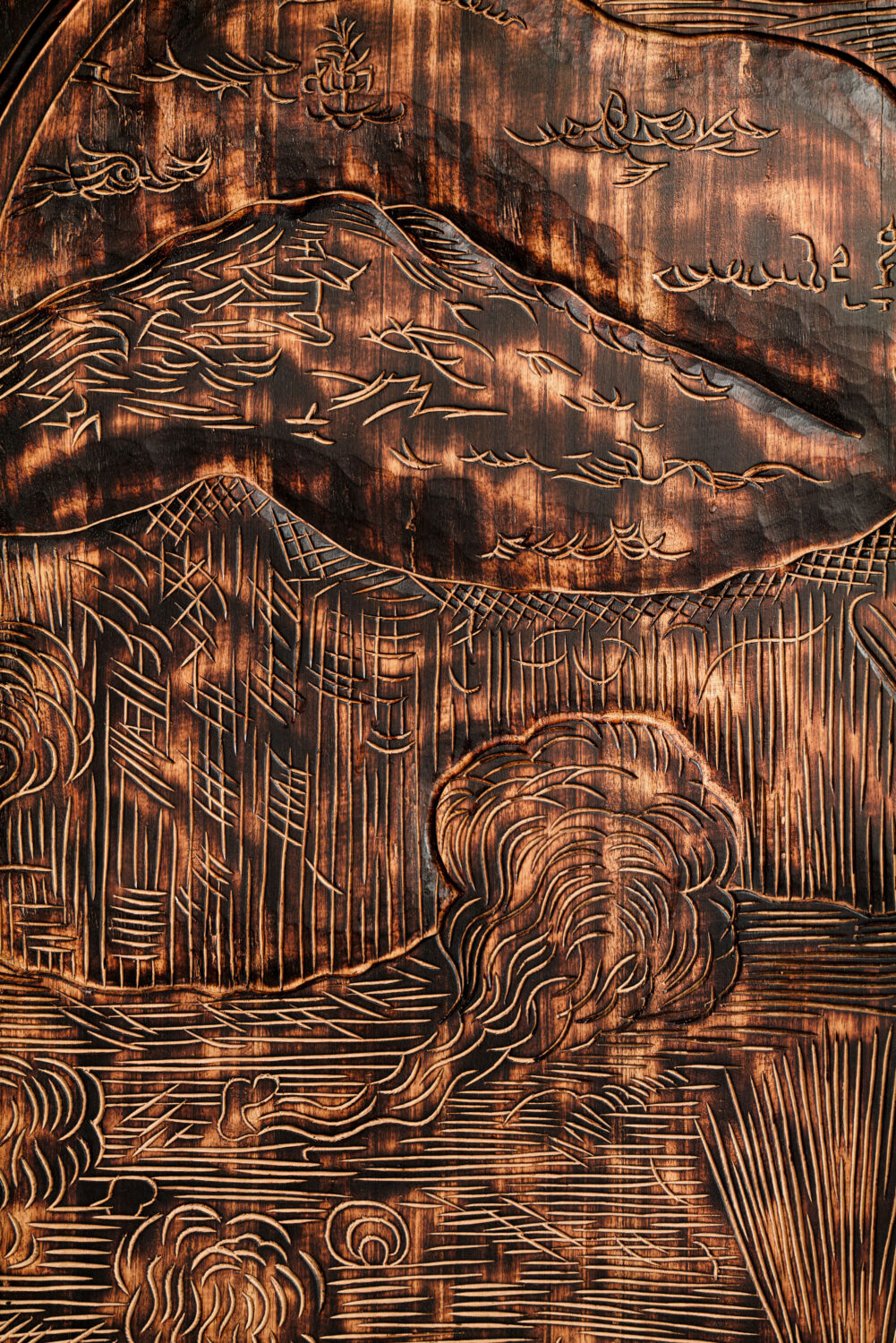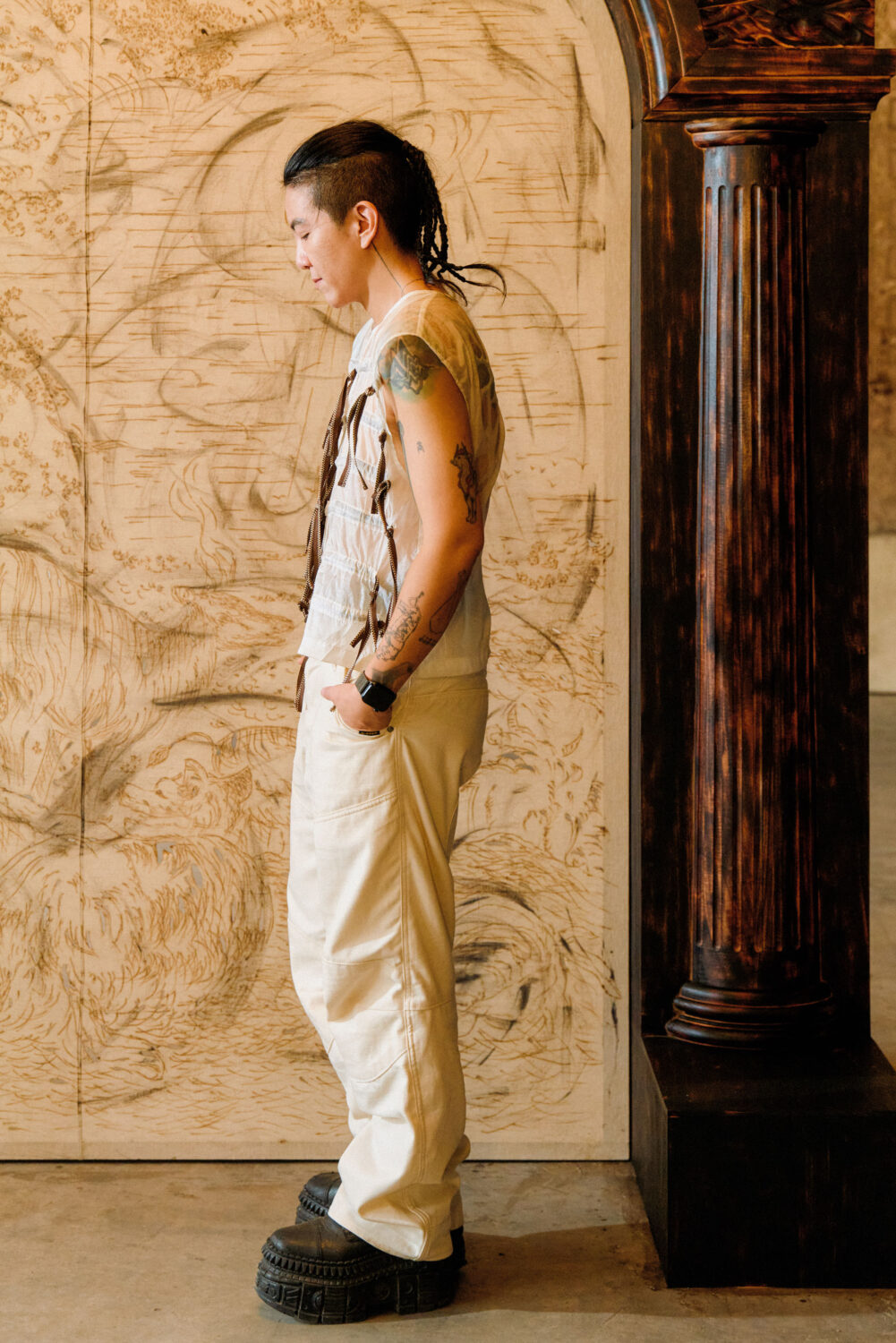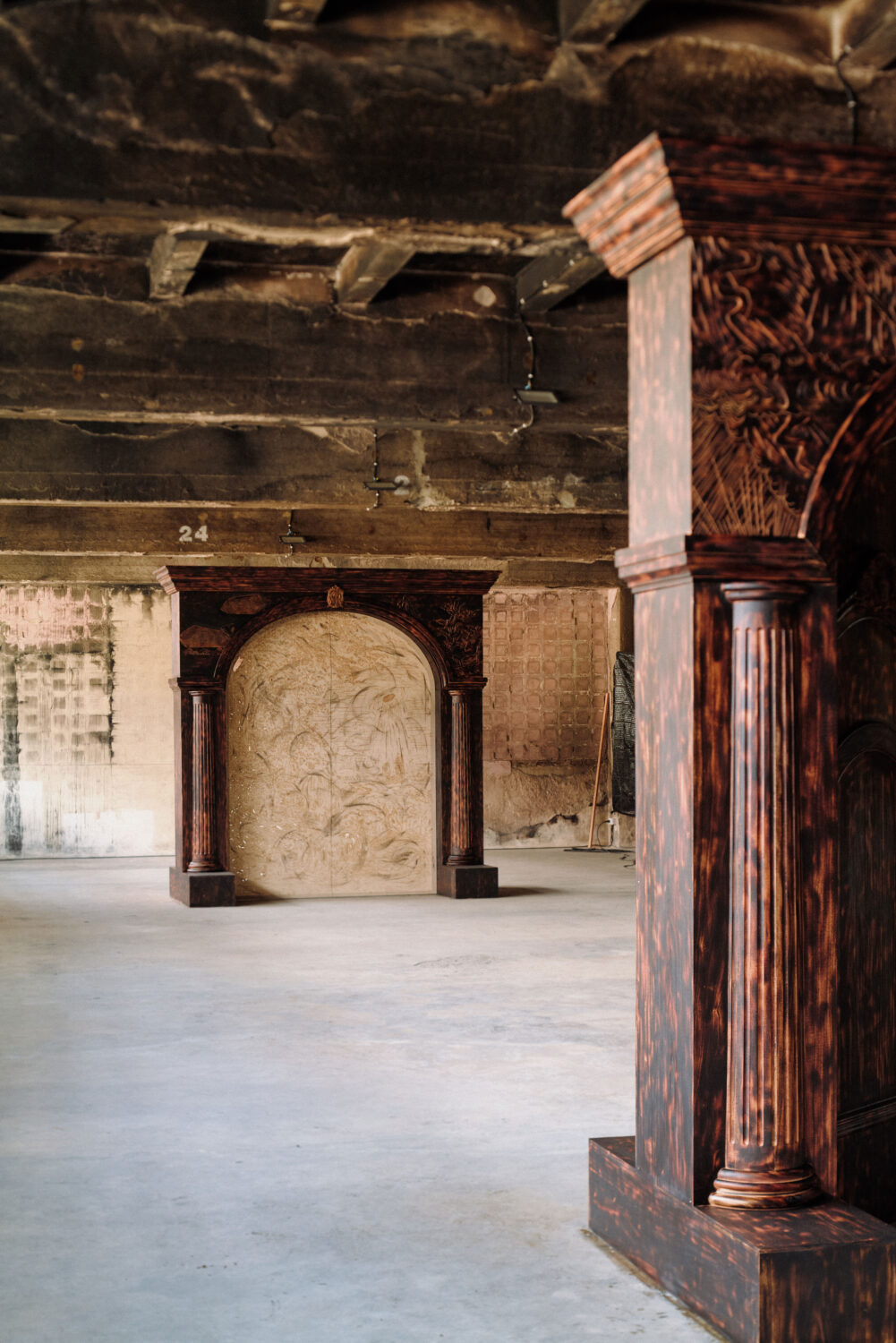Cole Lu: “The Idea of Something Born From Destruction Always Gives Me Hope”
By Keshav AnandFusing historical and literary motifs with personal experiences, Taipei-born New York-based multidisciplinary artist Cole Lu’s works tell meandering stories of dissonance and longing. Bolstered by references from ancient mythologies, Lu’s sculptures and paintings — made of burnt wood panels, linen, engraved metal, and concrete — nod to diverse cultures and temporalities. On view now and running until 25 February 2025, Thai gallery Nova Contemporary presents The Engineers, a solo exhibition by Lu, shown as part of the Bangkok Art Biennale. The site-specific installation is at the Museum and Library of Abbots of Wat Bowonniwet Vihara, a royal temple complex built in the early nineteenth century, which today serves as a significant repository of Thai Buddhist knowledge. To learn more, Something Curated’s Keshav Anand spoke with the artist.

Keshav Anand: Much of your work deals with themes of memory and home. What does “home” mean to you today?
Cole Lu: Home has been such a fluid existence in my mind; it hangs on a thin thread, which is somewhere you can be. Home is where I can act on what I see, and I am accepted as who I am and feel at ease in my identity. That’s a fundament of home for me. Certain places are home for me but not tied to geography specifically. Taiwan is home; it is where I was born, shaped my early consciousness, learned the notion of care, and where my family resides. New York is home; it is where I encountered vastly expanded minds, where my gender is affirmed, and where I grew into my full self artistically, physically, and socially.
Both places come with joy and agony. The sense of being fully seen in some areas and yet entirely overlooked in others is something I ponder much. Hence, the fluidity of home. The idea of the home also depends on particular time stamps. There’s always a critical moment when I feel a sense of relief, and that is when I feel at home, which usually contributes to the people around me, and in this way, people are home to me.

KA: What attracts you to fire as a medium?
CL: The idea of something born from destruction always gives me hope. And that is part of the cycle of fire. Take the example of ecological succession. Often, after the wildfire occurs, the nutrients of vegetation return to the ground in the form of ash; some plants only grow after a fire, such as the fire lily or spider orchid, which blooms ten times after fire. What draws me to use fire as a primary gesture is rooted in its application in the prehistorical context. We were taught that cave drawings (also known as a form of proto-writing) are the beginning of civilisation, including the development of the state, social stratification, urbanisation, and symbolic communication systems beyond verbal and nonverbal languages (i.e., writing systems and graphic arts).
However, the civilisation we know today carries many contradictions regarding the value of virtue and the fundamental definition and exercise of freedom. Fire comes before charcoal, a predominant medium in cave painting, so I want to challenge such a value system by writing and rewriting with fire. Pyrography is the term used to describe such technique, which means “writing with fire” in Greek.

KA: The Engineers explores ideas around myth-making, probing the establishment of social hierarchies. I’m curious to learn more about this line of thinking within the context of your wider practice.
CL: The world we live in is full of paradoxes, especially the establishment of various dominant hierarchies. Humans have a long history of practicing such vertical hierarchy, which makes me question the foundation of recorded history, which is often “documented” by the dominant group with a single perspective as a narrative fact. In reality, it is closer to historical fiction. And within those historical fictions, we see the social hierarchies practiced for centuries, including racism, sexism, ableism, anthropocentrism, and ethnocentrism, to name a few.
KA: What is the significance of neem wood in the installation?
CL: The Thai neem tree, botanically classified as Azadirachta Indica, also known as Sadao, is a widely seen and utilised local wood with its remarkable range of benefits and cultural significance. Often called the “Village Pharmacy” for its diverse medicinal properties, young leaves and flowers are often cooked and consumed as a vegetable and made into tonics as preventative medicine. It is essential for me to use a local, commonly found evergreen for the work in Bangkok; its familiar presence and its healing aspect draws me to work with it as the primary material.

KA: You’ve mentioned time and time travel as concepts that are important to the new work. If you could journey to any point in history, where and when would you go, and why?
CL: Time and time travel are never-ending wonders for me, and these fascinations are primarily based on how we deal with time within ourselves. If we strip off any measuring devices, the perception of time is fundamentally based on a series of events. I was fascinated by time perception and how it affects our memory. For me, the desire to travel to the past or future is largely based on a form of remorse (to correct) or anxiety (to reveal), and it is precisely for confronting these longings I want to stay on this very short bridge of the present.
KA: What are you currently reading?
CL: Book of My Nights by Li-Young Lee; The Message by Ta-Nehisi Coates; With Bloom Upon Them and Also with Blood by Justin Phillip Reed; The Accursed Share by Georges Bataille; The Arab Apocalypse by Etel Adnan; Grief Lessons: Four Plays by Euripides by Anne Carson; and But Did You Die? by Precious Okoyomon.
Cole Lu’s The Engineers runs at the Museum and Library of Abbots of Wat Bowonniwet, Bangkok until 25 February 2025.
Lu is also currently showing work as part of the group show, In saying these things, I went to sleep, at Nova Contemporary, Bangkok, on view until 11 January 2025.
Feature image: Courtesy of the artist, Nova Contemporary, and Bangkok Kunsthalle. Photo by Krittawat Atthsis.